I want to create a modern-day god of drifting ashore.
・・・・・・・・・・
Hello everyone, how are you all? This is Tanaka from GRIDFRAME.
<I want to create a modern-day god of drifting ashore.>

When I visited Mr. O in Ushitsu, Noto Town in September, he told me, “Noto is the part of the Japanese archipelago that juts out towards the continent, so it’s likely that many never-before-seen objects would wash up on Sotoura (the northern coast) from the continent. I think I can understand the feeling of worshiping something you’ve never seen before as a god. It is said that this is how so many faiths were born in Noto.”
The blog of Takayama, the chief priest of Haguro Shrine (https://ameblo.jp/hagurotetsu/entry-12318399903.html), has the following to say about the drifting god:
・・・・・・・・・・
There are a wide variety of examples of shrines dedicated to drifting gods and the deities they honour, including one like Haguro Shrine, where mountain ascetics travelled by sea to invite a deity in order to spread their faith, another example of a deity that is clearly of Korean origin, who hospitably welcomed a person who had fled conflict on the continent and arrived in Noto, and later worshipped him as the protector of the settlement, and another example of a shrine dedicated to a drifting god, where a mysterious drifting object was perceived as divine and a shrine was built to enshrine it. However, I believe that the underlying beliefs are certainly those unique to maritime peoples, such as “things that come from across the sea will surely bring good fortune” or “things that come from across the sea are frightening.
” ・・・・・・・・・・
There is no doubt that the ancient gods who came ashore were welcomed with intense curiosity, and this intense curiosity was likely directed not only at religious beliefs but also at a spirit of inquiry. I believe that these two things together have shaped the culture of Noto, continuing to this day and strongly influencing all aspects of life, including the culture of festivals such as the Abare Festival.
Human sensitivity to things we see for the first time has probably remained the same from the past to the present, but in today’s information-filled world, we feel like we’ve seen most things somewhere before, so perhaps we’ve entered an age where it’s difficult to experience the emotional excitement of “seeing something for the first time.”
However, I don’t have a vast amount of knowledge compared to people 100 years ago, and I feel like I’m simply living in an environment where a huge amount of information that I can’t process is floating around me. In such a situation, I think the only way to live an exciting life is, as I always write, to keep my mind detached and face things one-on-one.
I think facing driftwood is a prime example of this. Encounters with things that come to us from the other side, that we cannot choose. There are many such encounters in our daily lives, but I have overlooked many of them because I was “busy.” The phrase “Kurumasuga Nyorai” is written as “Kurumasuga Nyorai” and is read as “Nyorai.” These are the words that come to mind right now.
About 60 years ago, someone built a house out of a collection of flotsam that had washed up on the beach.
・・・・・・・・・・
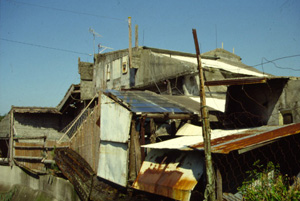
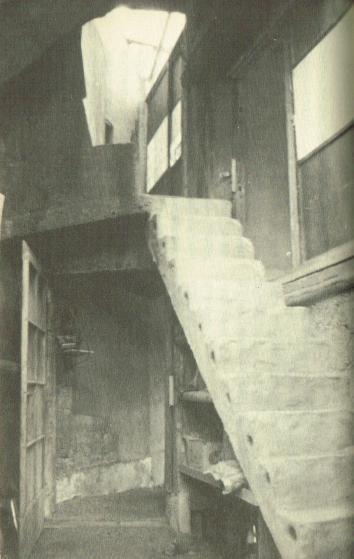
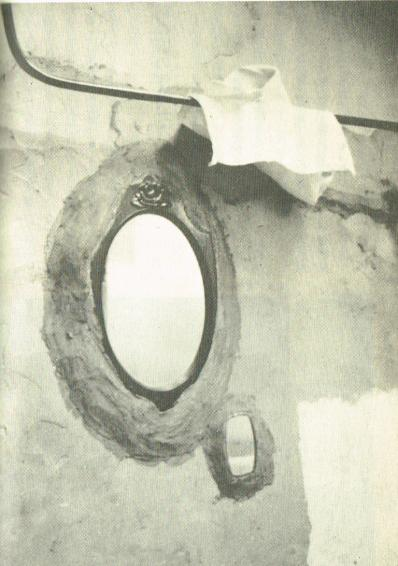
Banno Kazuroku would pick up all sorts of junk that washed up on the beach from nowhere – hand mirrors, television cathode ray tubes, pieces of wood, telegraph poles, wreckage of ships – and bring them home.He would then give new life to these objects that no longer served their original purpose in his privileged, dimly lit workshop, and fit them into this wonderland.
The indescribable kindness and nostalgia of Banno Kazuroku’s Wonderland is due to the ingenious use of recycled materials that can be seen throughout the building, such as cathode ray tubes beautifully fitted into the windows and telegraph poles that form the center of the structure, and perhaps it is Banno Kazuroku’s warm gaze towards things that no longer serve a purpose.
(Ishiyama Osamu, “Barracks Pure Land,” p. 132)
・・・・・・・・・・
I’m sure that Ichiroku Banno must have faced each and every driftwood one-on-one, processing and assembling them. If he could create a space that he considered beautiful in this way, he would surely be able to create a space that does not belong to any group…in other words, a space that excludes no one and that everyone wants to enter. This has been my thought ever since I first learned about this architecture. Driftwood is one of the ideal SOTOCHIKU materials.
The first photo is of Hota Beach in Kyonan Town, Chiba Prefecture, where a large amount of driftwood probably washes up from across the sea, such as the Miura Peninsula, the Izu Peninsula, and Oshima Island. This photo was taken when we went to collect the driftwood to add two new fixtures to The Art of Tea TOKYO.
We created fixtures that allow you to place the driftwood in a small shrine and worship it. At the entrance is a door from the mikoshi storehouse of Haguro Shrine, which was destroyed in the earthquake. These are arranged in a straight line.

In the photo above, doesn’t the silhouette of the driftwood among the fixtures by the entrance look like a seated drifting god?
<SOTOCHIKU Trailer Project: GRIDFRAME Walls Running Along the Road>
2024 was a year in which we spent many of our time away from Tokyo. We visited Kyonan Town, Chiba Prefecture almost every month, including holding the “Miracle of Paint” event at Pakchi Bank in April and October. Furthermore, as part of the “Reusing Things Destroyed by the Noto Earthquake for the Future” project, staff member M visited Oku-Noto 11 times and I visited five times since March.
In particular, it takes nine hours to get to Oku-Noto by car, even on the expressway. This means that you spend roughly more than 200 hours a year traveling. Is there a way to make the most of this time?
Also, how much effort and time did it take to get people in Noto and Kyonan Town to understand and take an interest in our unique endeavor, SOTOCHIKU?
So we thought we’d get people to know about SOTOCHIKU just by moving around, and that’s how we came up with the SOTOCHIKU trailer. It arrives without warning, like an unfamiliar piece of driftwood lol. We’re excited about it.
The SOTOCHIKU trailer has a simple steel frame structure that can be fitted with the GRIDFRAME system or a mesh, allowing various materials to be attached to the walls. The appearance can be transformed in a variety of ways depending on the materials combined.
I searched back to the frame structures I had previously created using the GRIDFRAME system, going all the way back to the wall I built from scrap iron when I was studying in the United States about 30 years ago.
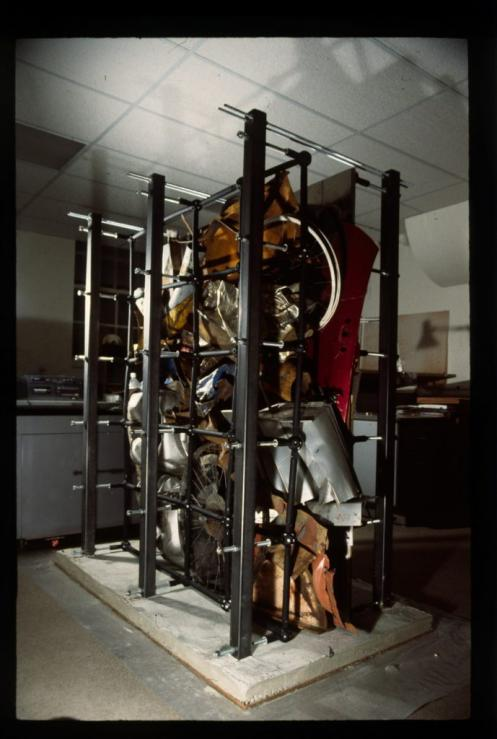
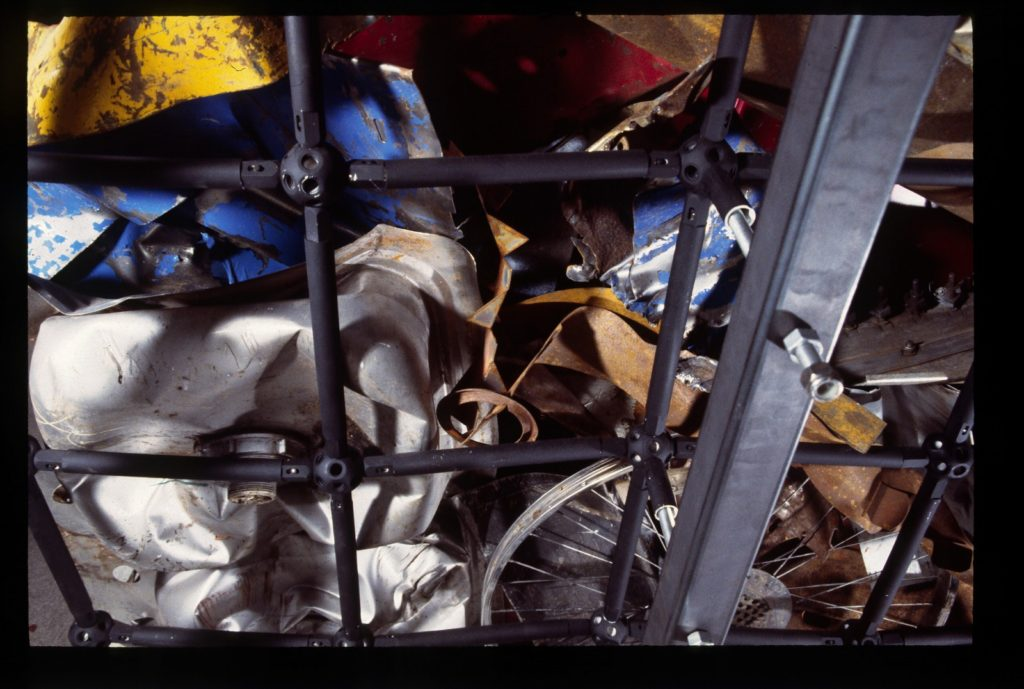
“Bringing things that are ignored to a place where they can be seen”
…The GRIDFRAME system was devised to achieve this. Just writing it like this may sound radical, but the words that inspired this concept are even more pointed.
“I will not allow anyone to look away, and I will not allow anyone to look away either.” (Mori Atsushi, “Transformation of Meaning,” p. 5)
Atsushi Mori writes that “the whole concept” always contains such contradictions. I think the word “whole concept” can be replaced with many other words, but for now I think it would be fine to replace it with the word “authentic.”
I want to create a space where people can encounter the “real thing.” However, a space shouldn’t feel like it’s forcing something on people. That’s why I rounded off the sharp corners and created the GRIDFRAME concept at the top of this page. In other words, the “real thing” is there, but it doesn’t matter if no one sees it. It’s only visible when those who want to see it want to see it. I think that’s the kind of feeling a space should have.
When scraps or other highly disorderly objects are spread out before one’s eyes, some people feel overwhelmed by the disorder, feel scared, and cannot stay there. That’s why we bring the GRIDFRAME system (a lattice framework measuring 30cm in length and width) in front of the object to soften the disorder, and the grid acts as a photographic framing, allowing one to cut out individual pieces and gaze at them like a photograph, in other words, to face them one-on-one.
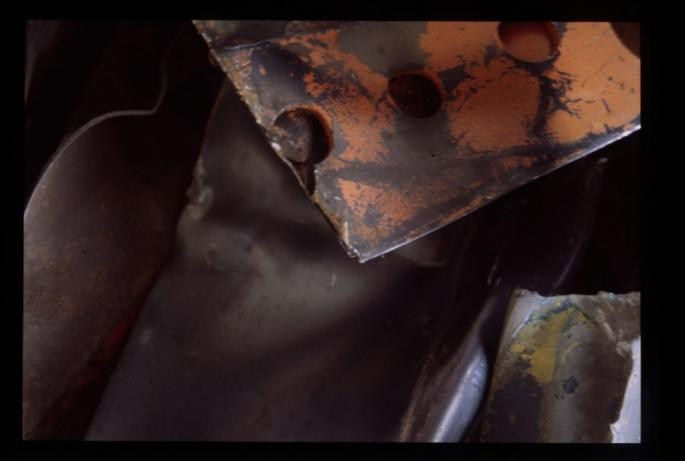
There are people who discover the “real thing” there.
In order to share the beauty of this “real thing,” I would like to transport the space to various places in the SOTOCHIKU trailer. I would be very happy if anyone is interested and would like to contact me.

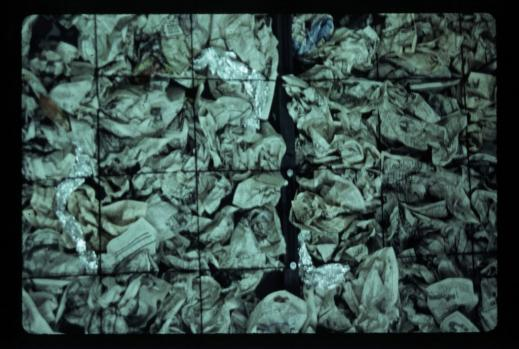
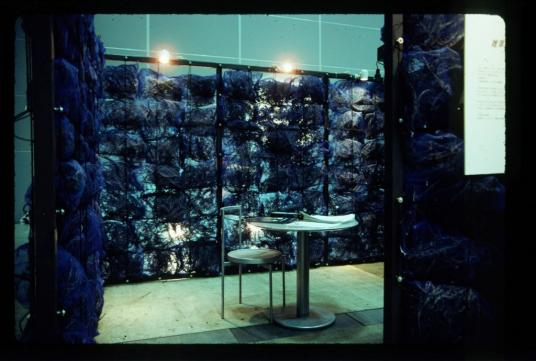



↑ Examples of GRIDFRAME systems from the 1990s made from materials such as scrap iron, newspapers, wild grasses, wire, CD cases, and fallen leaves.

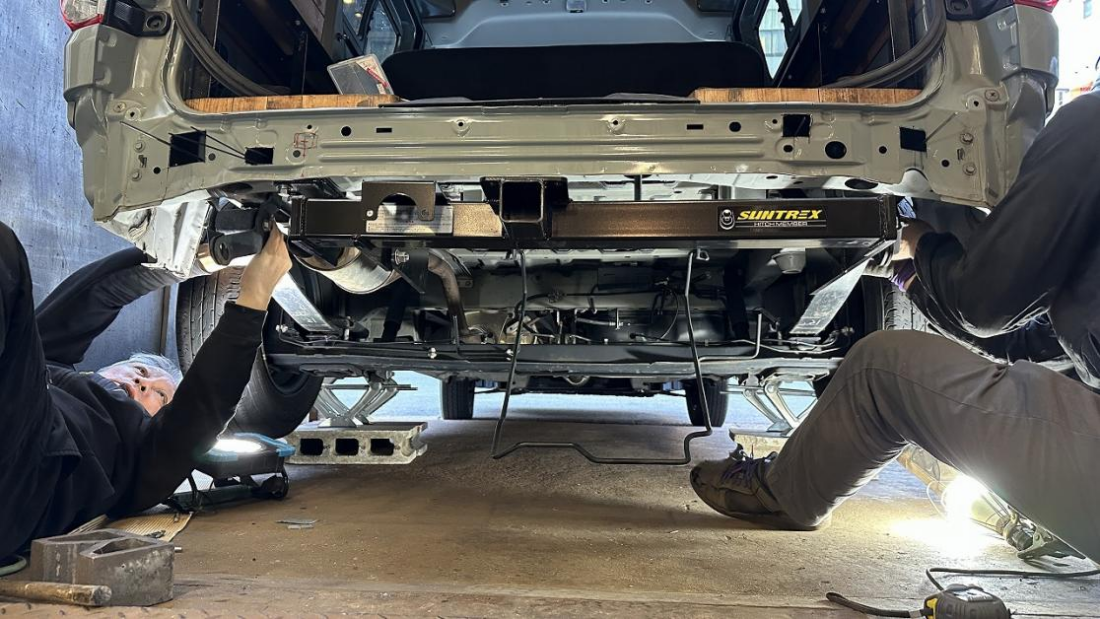
↑ Preparing the frame-only SOTOCHIKU trailer and towing vehicle
<Atsushi Shibuya’s photo book/photo exhibition “Connecting Noto”>

Photographer Atsushi Shibuya, whom I met at the Abare Festival in Ushitsu, Noto Town, traveled to Oku-Noto on the morning of January 2nd, the day after the Noto earthquake, and began taking pictures in an environment where roads were cut off in many places.
While pointing his camera at the disaster-stricken areas, he encountered people who exuded a powerful radiance. The film vividly conveys their way of life. Accepting the natural disaster as “atawari” (something that was destined), they appear to be calmly living their days in the traditional Noto way of life, coexisting with nature.
In areas experiencing depopulation, the economic rationality of pouring huge amounts of money into restoring small communities is being questioned. It is possible that in the future, local governments may give up on restoration efforts in some areas.
So, when cut off from the global economy, will depopulated villages be unable to survive? In fact, far from being unable to survive, perhaps they can find a new kind of richness there that surpasses city life?
We were shown a number of wonderful photographs that gave us a premonition of this, and it gave us the opportunity to think deeply about how to enrich our lives in the future.
The photo exhibition will also feature some of the SOTOCHIKU materials that we received as donations from Noto.
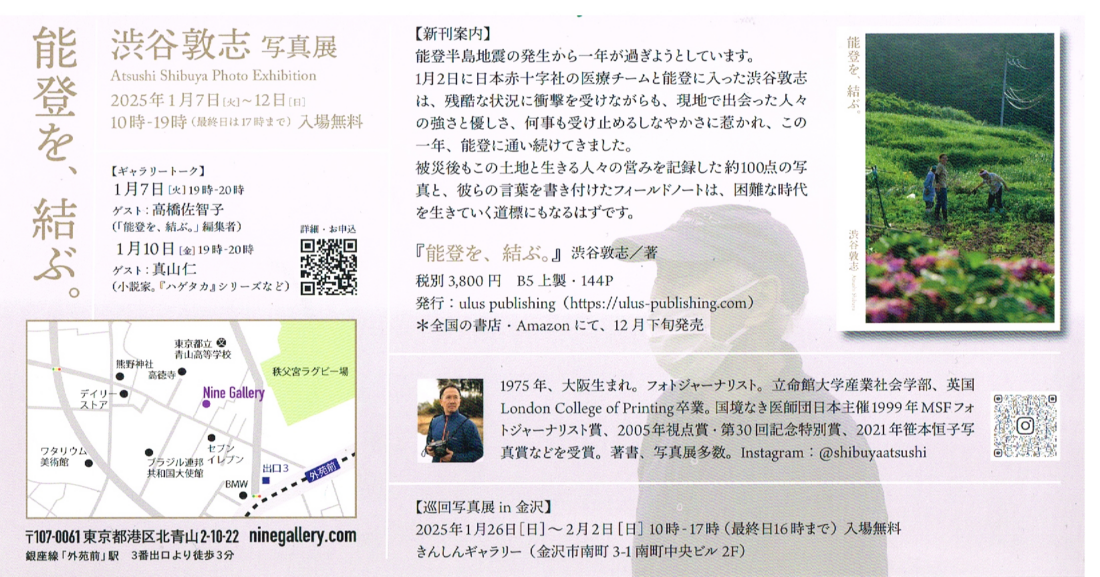
<SOTOCHIKU Showroom Opening>

It’s about a 20-minute walk from the Shibuya exhibition location to our SOTOCHIKU showroom. So we decided to join in and hold an open house lol. Please come along and join us. Let’s chat over a relaxing cup of coffee.
Date and time: January 10th (Friday) to 12th (Sunday), 10am-5pm (until 4pm on the 12th)
Location: GRIDFRAME, 2-20-4 Nishiazabu, Minato-ku, Tokyo
<Comments from everyone>
It’s been exactly one year since I started the SOTOCHIKU newsletter. For me, writing, like creating space, is about heading towards an unseen future, a thrilling task, like carefully following a thin thread so as not to break it as you move forward. So, you never know where you’ll end up until you’ve finished writing. I’d like to express my sincere gratitude to everyone who has been with me as I read my writing.
This time, as we conclude 2024, we would like to introduce some of the many comments we received.
[Reply from MT regarding the issue of “Sexy Tanaka-san” in Vol. 4]
Drawing manga, turning it into a drama… The conclusion is very convincing and interesting.
It seems to be one of the answers to the vague question I have about who to work with.
[Vol. 5: Reply from TO regarding the future vision of Oku-Noto]
I was surprised to see that reconstruction efforts have not progressed as planned after reading the SOTOCHIKU newsletter.
While the first step of SOTOCHIKU in Noto may be small, I believe it will have a big impact. I hope
that this system will become known to local volunteer groups, NPOs, construction companies, and builders in the surrounding prefectures.
[Vol. 5: Reply from SO about the future vision of Oku-Noto]
Through the series of photographs and writings about Noto, I felt many things.
I am reminded once again that collapse is an amazing thing.
I feel that the significance of putting an end to a piece of history brings so many different things to light.
At Matsunami Sake Brewery, the spirit and passion of the people who have been involved throughout its 150-year history are vividly and precisely expressed in the collapsed houses and tools left behind, as the brewery came to an end with its collapse.
It’s amazing how much passion they have poured into sake brewing over the years… This feeling is deeply apparent in each of the houses and tools shown in the photographs.
If the earthquake had not occurred and the plant had continued to operate as usual, the deep thoughts and feelings that have permeated the company through the ages and that have been shared by so many people would probably not have come to light.
That’s exactly what the scrap from the scrapyard that Tanaka saw when he was a student in the United States meant.
The meaning and value of an object’s life will be expressed more deeply and succinctly in the form it takes after it has completed its life.
Oriental medicine defines the human being as a soul.
The soul is the spiritual body and the spirit is the physical body.
It is said that at death the soul ascends to heaven, and the spirit turns to bones and returns to the earth.
Things have souls.
Not only living things, but even tools and buildings are imbued with the feelings and thoughts of those involved as souls.
It is this soul that resides within that breathes life into things, and that life heals and inspires life.
However, there are good and evil vibrations of the soul, and anything that has evil life breathed into it will cause life to decay and become decadent.
I believe the key to peace lies in how we can breathe the right life into people and pass on the baton of life.
Looking at Tanaka’s series of activities, it seems that even after death, he continues to select things that have been infused with the right kind of life, revive them, and make them a source of vitality for people and living things.
I think this is a wonderful initiative.
[Reply from MG about Vol. 6 Manga Artists’ Offices]
I also felt that the method of creating a more intense sense of tension and realism by trying to do this even in a field where it is possible to plan the once-in-a-lifetime nature of life is an effective one. I hope that
Tanaka and his colleagues’ activities will become work that will remain timeless, like Keith Jarrett’s improvisations.
[Vol. 7: Reply from KM about manga artists’ office spaces]
One of the reasons I have aspired to “bring world peace through photography” is the image of the local people who came to pick up the albums and photographs that were washed away in the disaster.
It is a wonderful and precious material that gives a strong sense of recovery and regeneration from the earthquake disaster.
I would also love to decorate my store with materials that have meaning and significance related to my origins.
[Vol. 8: YE’s thoughts on the Abare Festival]
Reading and looking at the pictures
really got me thinking.
The souls that reside in things are in the ruined town
Words are very important in creating space .
There is beauty, strength, and life in the ruins of these buildings.
I feel like I’ve been saved a little.
After acting on instinct,
I had to reflect on common sense and it was painful, so I thought I’d try to find a more free-flowing answer.
[Reply from JU about the space at Vol. 9 The Art of Tea]
I feel like I’ve finally reached the real thing.
I’m looking forward to what’s to come.
[Reply from HY regarding the space of Vol. 9 The Art of Tea]
“Even a small project would be fine. Could we have the opportunity to take on the challenge of restoring the space destroyed by the Noto Peninsula earthquake?”
I think this is a very meaningful action. It may sound inappropriate to the people of Noto, but I think it will be a very fun project and will move everyone in a positive direction.
[Reply from AM about Vol. 11 Paint Miracle]
This time, I was able to learn about many unknown worlds. “REBIRTH” has a wonderful texture. (I remember buying a photo book a long time ago that featured photos of the interiors of abandoned houses on the coast of Los Angeles, where the interiors were burned and gradually destroyed, and the paint that was applied to them transformed them. I remember being always inspired by this, but I’ve forgotten the title.) This time, I was particularly drawn to the “sea-dyed” steel plate. The steel plate, which captures a fleeting shape, is like a photograph with a sense of texture and volume, and the fact that it is engraved with time somehow reminded me of the phonograph, which captures the traces of vibration in the earliest sound recordings. From the image, I imagine the complex undulations of the surface, the reflections of light, and the texture when I see it in person.
[Reply from SS about Vol. 11 “The Miraculous Path of Paint”]
I enjoyed reading this issue as well.
After reading the linked article, I feel like I have a slightly better understanding of SOTOCHIKU.
When I first read the SOTOCHIKU newsletter, I felt it was interesting
that there are people who are attracted to things that I don’t understand the appeal of , but by reading the SOTOCHIKU newsletter every month, I’m starting to get a vague idea of what it is about SOTOCHIKU that Tanaka finds so appealing, and it’s interesting how it’s starting to take shape. Everyone really does see the world differently. And yet, it’s interesting how it feels like there’s something deep down that we all have in common.
[Reply from MI, who donated roofing tiles in Noto Town, about the space of Vol. 9 The Art of Tea]
When I went to Tokyo in October, I stopped by Kappabashi.
Although I’m not an expert on art or architecture, I had
the impression that Kappabashi was a place with a lot of randomly placed items, but this store had a clean and calm feel to it.
Standing there, I suddenly remembered my parents.
My parents both worked, so my siblings and I felt lonely because my mother couldn’t come to school open days, sports days, etc. At that time, there were very few dual-income families. Neither of my parents was from Udezu, so we bought a used house around the time I was born and lived in it.
The current house is the first new house my parents built with great effort, and I thought that a part of it is still alive in another place.
Tokyo is where I spent the happiest time of my life as a student, and I hope to remain there for a long time to come.
…
There are so many other replies I would like to share with you all. Your replies have given me so much insight and strength, and have allowed me to continue for a year. I am deeply grateful to everyone who has read this.
<At the end of 2024>
The Noto earthquake occurred just as the newsletter began, and Noto became a central focus of the newsletter, as we wondered if there was anything we could do to contribute. The SOTOCHIKU newsletter is also a record of staff member M’s continued visits to Noto, risking his life as a disaster volunteer, and building relationships in a place he had no prior connection with.
The dismantling of broken things progresses every day, and while there are some happy aspects to this, we watch with mixed feelings as the “things with souls” that remember the time that has passed in Noto gradually disappear.
What does the future hold for Noto? Will the landscape where the Noto gods reside be preserved? Will that fiery festival continue into the future?
The broken things may disappear within the next year. However, the opportunity for us to take on the challenge of restoring the broken spaces in Noto has not yet arrived. There are also very few projects around Tokyo that aim to use broken things from Noto to create new spaces, which would also support such activities.
To be honest, I feel compelled to say, “Please help me.” If there are people out there who agree with me, please lend me your support.
Lastly, this year has been a year in which I have deepened my connections not only with Noto but also with various other places, such as Kyonan Town in Chiba Prefecture. Next year, I would like to tow the SOTOCHIKU trailer and visit various places.
We hope to continue reporting on SOTOCHIKU’s various activities next year. We hope you have a wonderful new year.
December 31, 2024 GRIDFRAME Toshiro Tanaka

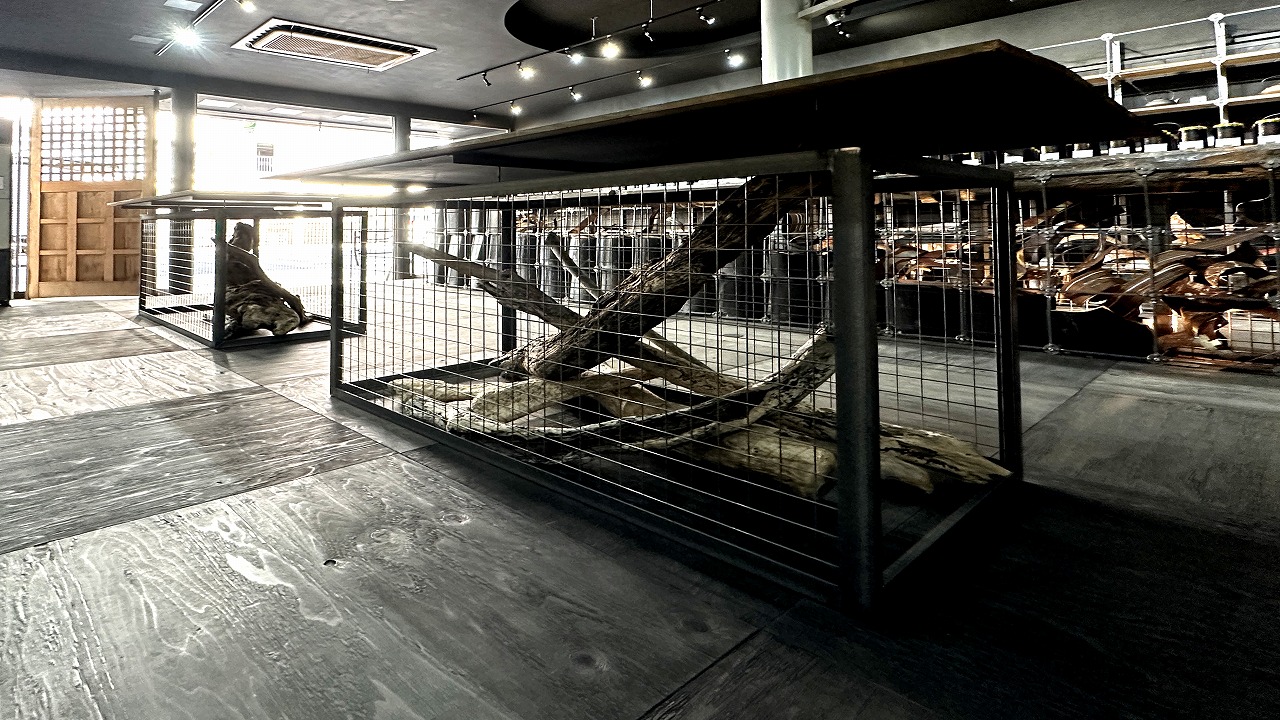
Comments are closed